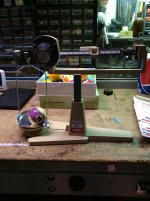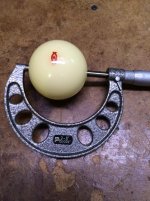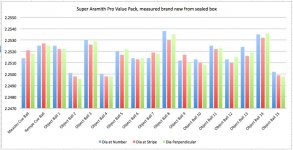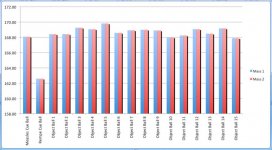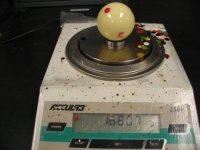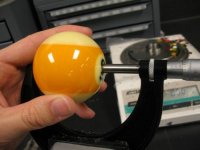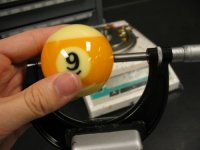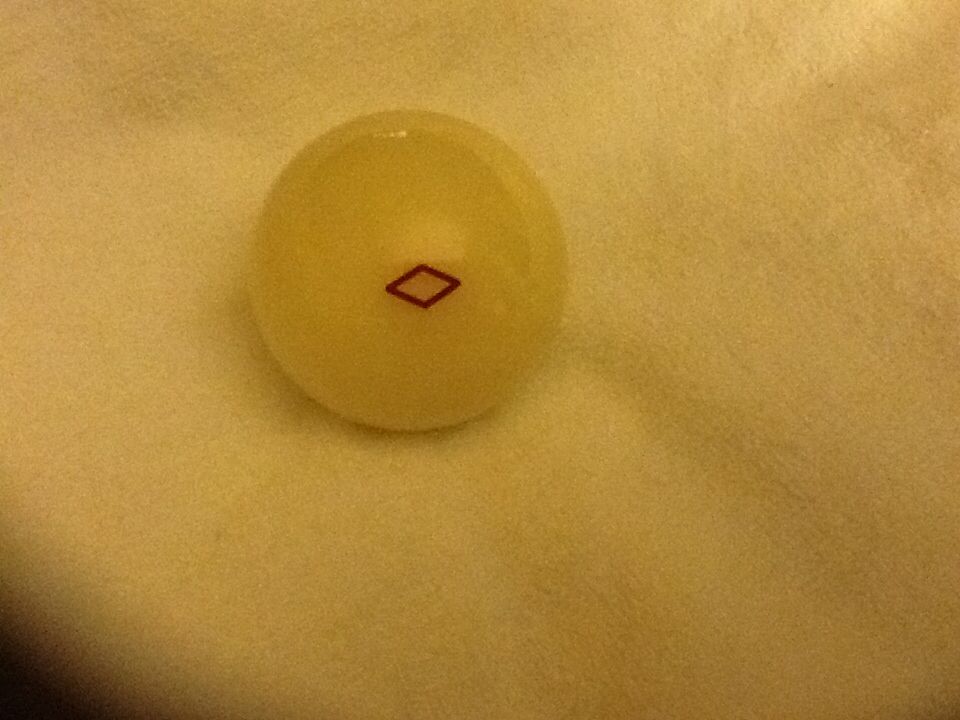First of all I would like to say thanks to AZ member nancewayne for the great deal and fast shipping on these pool balls. Wayne made this deal amazingly easy with a personal touch I did not expect. Before I ordered the balls he gave me his number and asked if I would call him to make sure he new what I needed.
Wayne was easy to talk to and it was clear to see we had much in common. I would not hesitate buying pool related items from Wayne.
Thanks again Wayne!
Now to the balls.
I have Brunswick Centennials and Aramith Super Pro balls that I have shot with for years.
The Super Pros were bought new when I purchased my Diamond Pro about mid 2008.
The Centennials were used for about six years before that on a Olhausen 9ftr.
Just for fun I decided to measure and weigh these while they are new so I could tell how much they wear as I use them.
Unfortunately I did not do this test with my other ball set so there will be no real comparison to the other sets(at least for now).
These measurements were taken with a accurate scale and a tested Micrometer.
Cue ball 170.7 grams 2.250
One ball 169.3 grams 2.248
Two ball 169.5 grams 2.248
Three ball 168.9 grams 2.247
Four ball 168.7 grams 2.247
Five ball 168.9 grams 2.248
Six ball 168.4 grams 2.248
Seven ball 168.7 grams 2.248
Eight ball 169.1 grams 2.248
Nine ball 168.6 grams 2.246
Ten ball 168.7 grams 2.246
Eleven ball 168.6 grams 2.247
Twelve ball 168.8 grams 2.247
Thirteen ball 169.3 grams 2.247
Fourteen ball 168.8 grams 2.248
Fifteen ball 168.8 grams 2.248
Wayne was easy to talk to and it was clear to see we had much in common. I would not hesitate buying pool related items from Wayne.
Thanks again Wayne!
Now to the balls.
I have Brunswick Centennials and Aramith Super Pro balls that I have shot with for years.
The Super Pros were bought new when I purchased my Diamond Pro about mid 2008.
The Centennials were used for about six years before that on a Olhausen 9ftr.
Just for fun I decided to measure and weigh these while they are new so I could tell how much they wear as I use them.
Unfortunately I did not do this test with my other ball set so there will be no real comparison to the other sets(at least for now).
These measurements were taken with a accurate scale and a tested Micrometer.
Cue ball 170.7 grams 2.250
One ball 169.3 grams 2.248
Two ball 169.5 grams 2.248
Three ball 168.9 grams 2.247
Four ball 168.7 grams 2.247
Five ball 168.9 grams 2.248
Six ball 168.4 grams 2.248
Seven ball 168.7 grams 2.248
Eight ball 169.1 grams 2.248
Nine ball 168.6 grams 2.246
Ten ball 168.7 grams 2.246
Eleven ball 168.6 grams 2.247
Twelve ball 168.8 grams 2.247
Thirteen ball 169.3 grams 2.247
Fourteen ball 168.8 grams 2.248
Fifteen ball 168.8 grams 2.248
